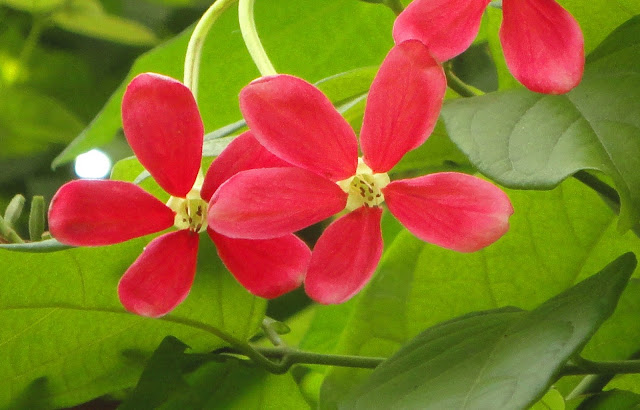Modhu-monjori ori Rangoon creeper, Combretum indicum

Modhu-monjori or Rangoon creeper (C ombretum indicum , family: Combretaceae) is a extensive woody perennial creeper with red flower clusters. The ornamental vine is native to South and Southeast Asia, specially to Indian subcontinent and Myanmar. The woody climber can reach a length up to 8 m. Common names: Modhu-monjori, Madhuri-lota, Rangoon creeper, Chinese honeysuckle. Flowers are originally red, slightly scented, corolla tubular, petals 5. Flowers bloom mainly in summer and rains. Leaves are green, rough, opposite, ovate, apex acuminate, edge wavy, 6-14 cm long and 3-6 cm wide. With the change of time the white flower becomes pink and then it turns red. Fruits are elliptical, 5-winged, dark brown in color. The Bangla name of the flower (Modhu-monjori) is named by Rabindranath Tagore. It is grown in garden as ornamental flower plant in Bangladesh. Leaves, roots and seeds are used in skin disease, worm, stomach disorder, ...







